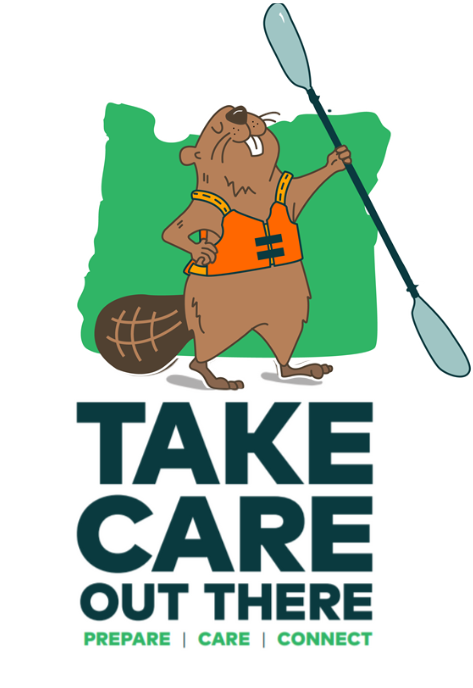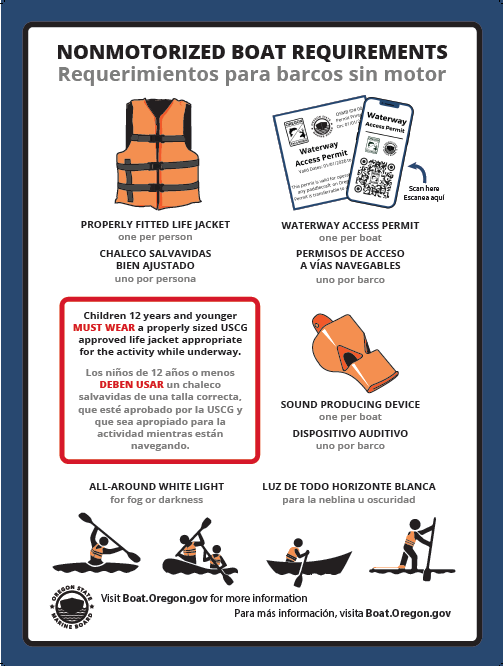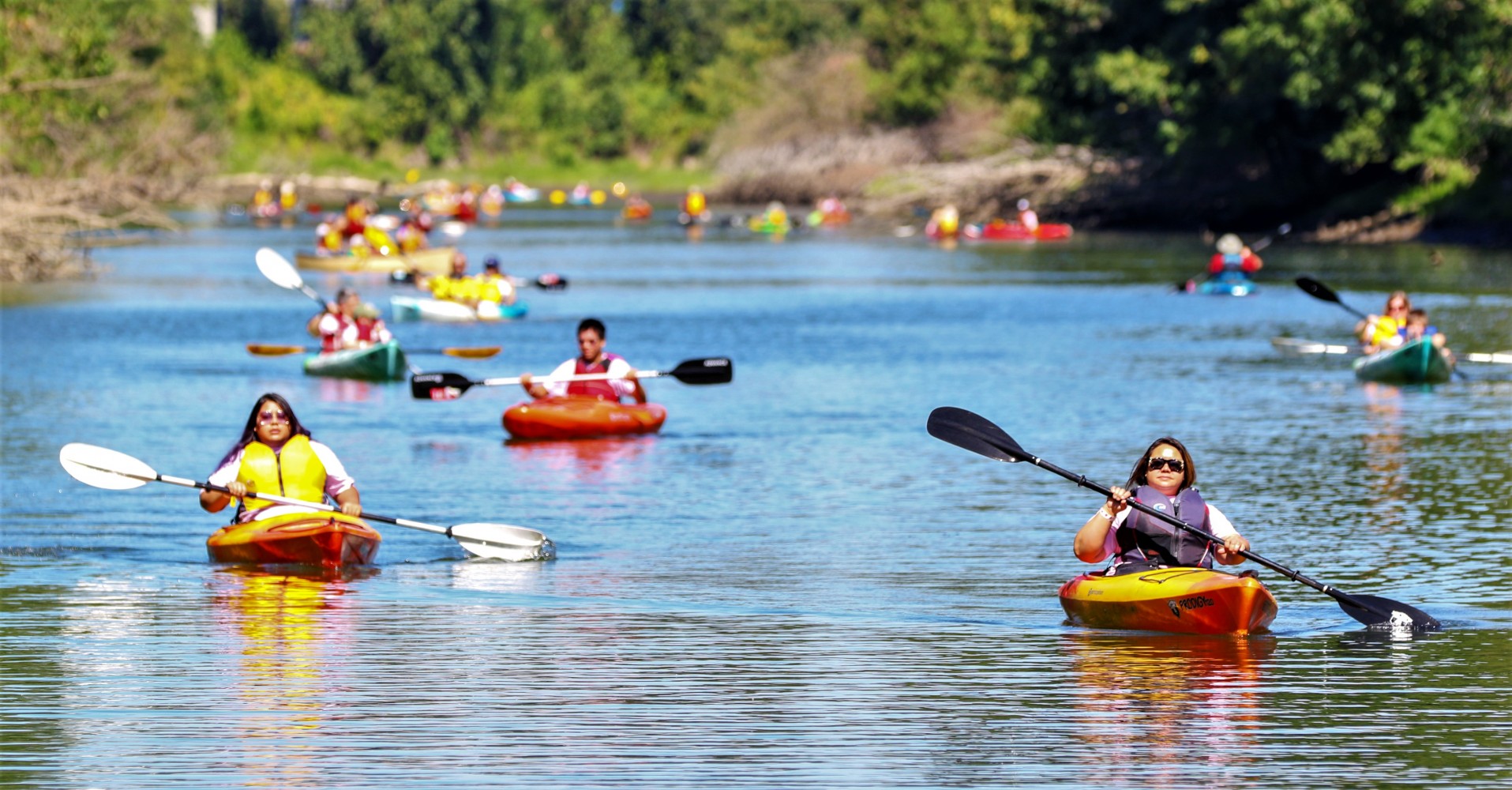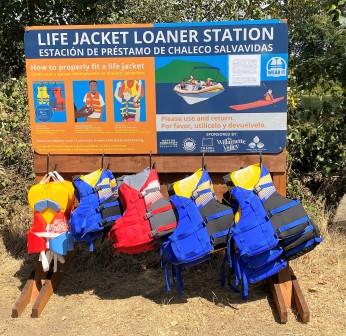
Social Media Tile Branding
Prepare Treatment with Beaver in PFD
Care Treatment with Beaver in PDF
Connect Treatment with Beaver in PFD
Spanish Cuidate (Care) Treatment
Spanish Conectate (Connect) Treatment
---
Waterway Access Permit Flyer
Waterway Access Permit Rack Card
Waterway Access Permit Flyer -Spanish
Waterway Access Permit Rack Card - Spanish
Willamette Water Trail FAQs
---
Requirements for Paddlers
Requisitos para los palistas

Become a Partner in Safety! Take the Life Jacket Commitment Pledge to use images of people wearing life jackets when recreating on the water.

Learn All About Life Jackets
Life Jacket Loaner Stations

Social Media Tips
We recognize that your organization may have its own hashtag list. When messaging boating safety and Take Care Out There, we hope you will consider including these hashtags as well:
Statewide Water Safety Hashtags:
#TakeCareOutThere #WearItOregon #BoatSafeBoatSober #PrepareCareConnect
#BoatOregon
Willamette Water Trail Specific Hashtags: (use these with the above statewide water safety hashtags)
#WillametteWaterTrail #IwonderWV